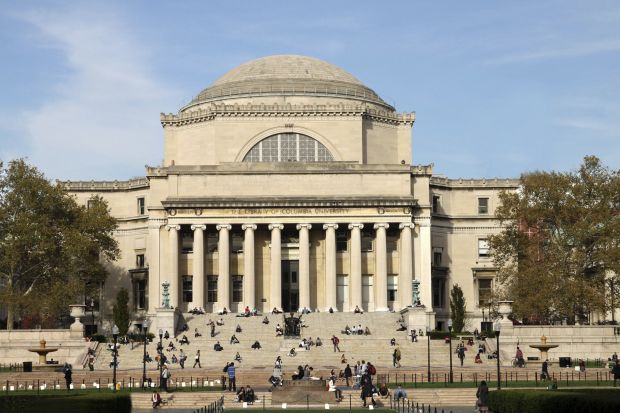Columbia University’s fight with its students and national politicians is escalating, with protesters resuming their occupation of the main campus lawn despite mass arrests and suspensions, and members of Congress insisting the institution isn’t fighting back hard enough.
The movement also appears to be spreading, with students on at least a dozen campuses in the US and beyond arranging demonstrations in support of their Columbia counterparts, protesting both Israel’s military assaults in Gaza and more general issues of political and donor control over free speech in academic settings.
As the renewed sit-in persisted at Columbia, the university’s president, Baroness Shafik, ordered all classes for at least the first day of the week be held online rather than in-person, asked students not to come to campus, and held out the possibility she would not repeat her act of asking New York City police to arrest protesting students.
“The decibel of our disagreements has only increased in recent days,” the Columbia president said in a written message to her university community. “These tensions have been exploited and amplified by individuals who are not affiliated with Columbia who have come to campus to pursue their own agendas. We need a reset.”
US colleges and universities have seen ongoing demonstrations against US support for Israel since the October attack by Hamas. The size and tone has escalated in the past week, after the Columbia president was called to testimony before the education committee of the Republican-led US House of Representatives.
After a similar congressional hearing in December led to the ousting of the presidents of Harvard University and the University of Pennsylvania, the Columbia leader repeatedly agreed with lawmakers during four-hour encounter that she would take a harder line on student and faculty protesters.
The Columbia administration – to the approval of the committee’s Republican leadership – then proceeded to arrest and threaten the suspension of more than 100 students who staged a protest on the New York campus’ South Lawn at the same time as the hearing in Washington. Yet, almost immediately after the arrests, students set up tents on the lawn to resume their protests.
Their chief goals include forcing to Columbia to end any financial ties between the university and any companies that benefit from Israeli’s military operations – and to reverse any punishments of students for the previous protest.
Columbia University leaders promised in a statement that they would soon end the new demonstration. Yet lawmakers involved in the House hearing quickly expressed their disappointment that the university allowed occupation of its campus lawn to resume. One of their most outspoken members of the House committee, Elise Stefanik, called for the Columbia president to resign for having “clearly lost control” of her campus.
The university is also taking sharp criticism from the other ideological direction. The nation’s main faculty association, the American Association of University Professors – which arranged a nationwide series of faculty and student protest events to coincide with the congressional hearing – faulted Columbia’s president for blaming faculty at the hearing rather than standing up for their basic right to free expression and for ordering the student arrests during a peaceful act of protest.
“While one can sympathise with the fact that the hearing was a set-up from the get-go and intended to generate sound bites and clickbait to serve a political agenda, any university president worth their salt – and salary – should stand unequivocally for free and open inquiry, especially when topics are controversial and polarising, and debates are heated and messy,” the AAU said in a statement from its president, Irene Mulvey.
Congressional Republicans have described their position as motivated by a desire to protect Jewish students and fight antisemitism. Democrats have questioned that rationale, suggesting that Republicans appear more motivated by a long-standing interest in challenging what they regard as the generally left-leaning orientation of US higher education.




